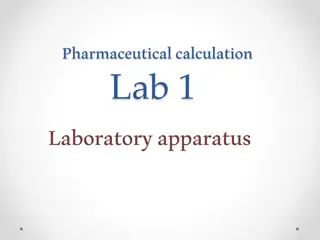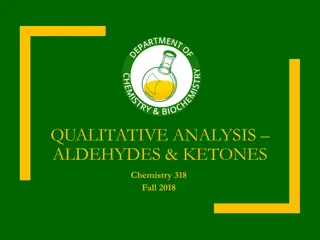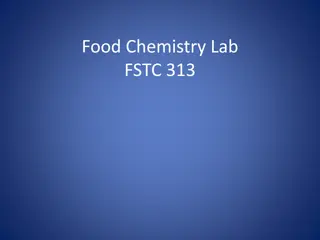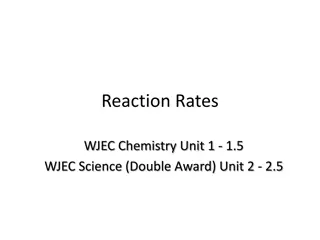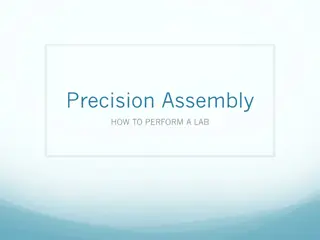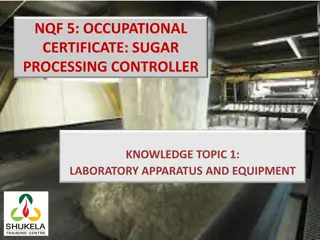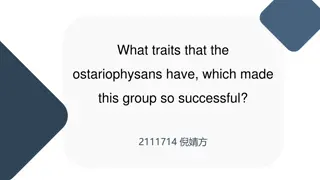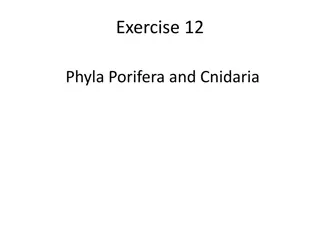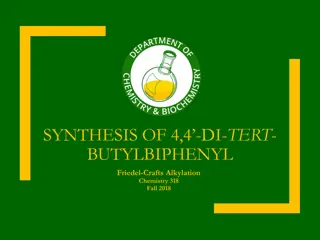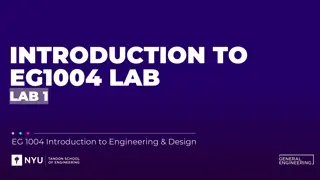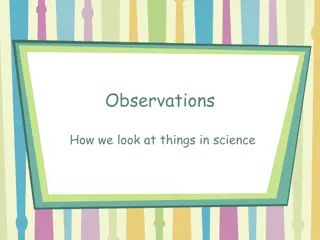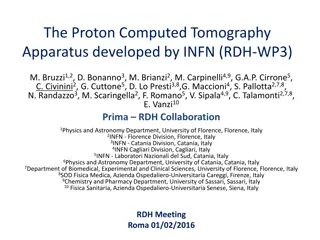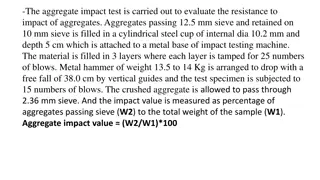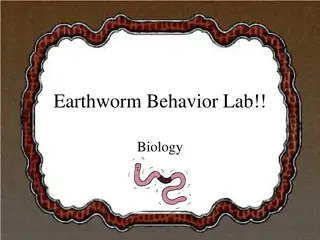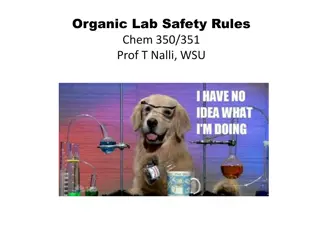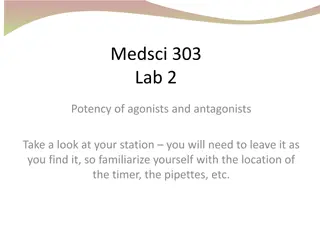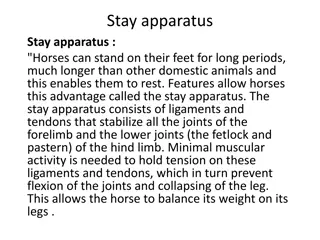Observations of Hoffman Apparatus in Lab
Record observations of the glass Hoffman apparatus in the fume hood with images. Learn to distinguish pure substances from compounds by separation techniques. Discuss evidence for the elemental composition of water and draw particle diagrams to represent the decomposition of water. Consider reactions between hydrogen and bromine to predict gas volumes.
Download Presentation

Please find below an Image/Link to download the presentation.
The content on the website is provided AS IS for your information and personal use only. It may not be sold, licensed, or shared on other websites without obtaining consent from the author.If you encounter any issues during the download, it is possible that the publisher has removed the file from their server.
You are allowed to download the files provided on this website for personal or commercial use, subject to the condition that they are used lawfully. All files are the property of their respective owners.
The content on the website is provided AS IS for your information and personal use only. It may not be sold, licensed, or shared on other websites without obtaining consent from the author.
E N D
Presentation Transcript
Do Now Make observations of the glass Hoffman apparatus in the fume hood. Record your observations in words and pictures in your notebook.
With this lesson, students should be able to: Distinguish pure substances from compounds by: Separation techniques Composition Characteristic properties Particles models Cite evidence of compounded matter Describe evidence for the elemental composition of water
After observing the hoffman apparatus in class, or on video, answer the following What evidence do we have that water is compounded of simpler particles, not a mixture of simpler particles? What evidence can we use to identify the elemental particles that make up water? What evidence do we have to identify the ratio of those simpler particles in compounded water Draw a particle diagram to represent the decomposition of water, based on the evidence you ve described
Check your particle diagram (decompostion of water) Does your drawing reflect the conservation of matter? Does your drawing accurately show the relative combining volumes? Does your drawing accurately show everything else we know about the behavior of gases at equal temperatures with equal pressures?
Consider the reaction of Hydrogen and Bromine Hydrogen is a low density colorless gas which reacts violently with oxygen. Bromine is a high density red gas which is not particularly reactive with oxygen. Hydrogen bromide is a transparent water soluble gas which reacts with metals, but not with oxygen. Hydrogen and bromine react in a 1:1 particle to particle ratio to form hydrogen bromide. Use particle drawings to predict the gas volumes (hydrogen and bromine) required to produce 2 liters of HBr.
Experimental results What untested assumptions have you made in constructing your particle model?
Draw particle models to test the following variant assumptions about hydrogen and bromine gas What if hydrogen forms diatomic particles, represented as H-H instead of H H ? What if bromine forms diatomic particles, represented as Br-Br instead of Br Br ? What if both gases form diatomic particles? Draw particle models based on each of these assumptions, to predict the combining volumes of hydrogen and bromine gas required to make two volumes of hydrogen bromide.
1 volume of hydrogen reacts with 1 volume of bromine to form 2 volumes of hydrogen bromide. Is this observation consistent with one of your predictions? Which one?
The vertical columns of the periodic table are called GROUPS, or FAMILIES (Numbered 1 -18). The elements in any group of the periodic table have similar physical and chemical properties!
The horizontal rows of the Periodic Table are called PERIODS (Numbered 1 -7, the Principal Quantum Number, n).
Additional Information (Colors refer to our text only.) Metals (Lithium) Nonmetals (Oxygen) Semimetals (Metalloids) (Silicon) Phase @20 C Solid (Carbon) Liquid (Bromine) Gas (Hydrogen)
s-, p-, d-, f-Block Elements (See page 171 of text.) s-Block: H, He, Groups 1 & 2. Note the s1 or s2 electron configuration. p-Block: Groups 13 18. Note the p1 to p6 electron configuration. d-Block: Groups 3 12. Note that d- orbitals fill, d1 d10 electron configuration. f-Block: Elements below the main body of the Periodic Table. Note that f-orbitals fill, f1 f14, but not always in order.
Sections of the Periodic Table The s and p Block elements are called REPRESENTATIVE ELEMENTS. Group 1: Alkali Metals What feature do they share? Group 2: Alkaline Earth Metals What feature do they share? Groups 3 -12: Transition Metals How are they alike?
Sections of the Periodic Table InnerTransition Metals Also called the rare-earth elements. Group 17: Halogens What do these elements have in common? Group 18: Noble Gases And these?
Antoine Lavoisier (1743 - 1794) Lavoisier completed a series of experiments like those we completed in unit 1 mass change lab, and like those in this unit s Dalton s Playhouse. From which he concluded: 16
Based on his series of experiments, Lavoisier proposed The Law of Conservation of Mass. "Nothing is created, either in the operations of art or in those of nature, and it may be considered as a general principle that in every operation there exists an equal quantity of matter before and after the operation. 17
Joseph Louis Proust(1754 1826) Proust observed that water, no matter its source always has a composition of 88.9% oxygen and 11.1% hydrogen (by mass) . He noted that other known compounds also have characteristic mass composition. Mass composition is a characteristic property of compounds 18
From his series of experiments, Proust, proposed The Law of Definite Compositions. The proportion by mass of the elements in a given compound is always the same. 19
But a controversy arose between Proust and Claude Berthollet. Each announced contradictory laws around 1800. Proust: Elements combine to form compounds in a fixed proportion by weight. Berthollet: Elements combine to form compounds in variable ratios. (The law of multiple proportions) 20
Along came Amedeo Avogadrowho suggested Equal volumes of all gases at the same temperature and pressure contain the same number of molecules. (Avogadro's Principle) (1776 1856) 21
John Dalton (1766-1826) pulled together all of these observations into one unifying theory.
Daltons Atomic Theory (1803) Elements are made of tiny indestructible atoms. Atoms of a given element are identical. Atoms of different elements have different masses and properties. Atoms only combine in small, whole number ratios such as 1:1, 1:2, 2:3, etc. Chemical reactions are the rearrangements of atoms. Atoms are neither created nor destroyed in chemical reactions. 23
Most of Daltons Atomic Theory survived the test of time, except Elements are made of tiny indestructible atoms. We now know that nuclear explosions actually destroy atoms, releasing energy by Einstein s famous equation, E = mc2. Atoms of the same element are identical, with the same properties (including their weight). We now know this is incorrect, but in 1803 the concept of isotopes was still over 100 years in the future. 24
Determining compound formulas from gas volumes When gases combine, we use the simple whole number ratios of the combining volumes to determine formulas. Review Worksheet 2.
Determining compound formulas from mass ratios Mass ratios are not simple whole number ratios. For example the following two compounds are formed between Oxygen and carbon is only approximately 4 gO : 3 gC for compound A 8 gO : 3 gC for compound B However the ratio between the two numbers is a simple whole number ratio. 1 O/C in compound A : 2 O/C in compound B Conclusion: If Oxygen has a slightly larger mass than Carbon, by the ratio of 4/3, then compound B has twice as much Oxygen for each Carbon as compound A Compound A is CO and compound B is CO2.


